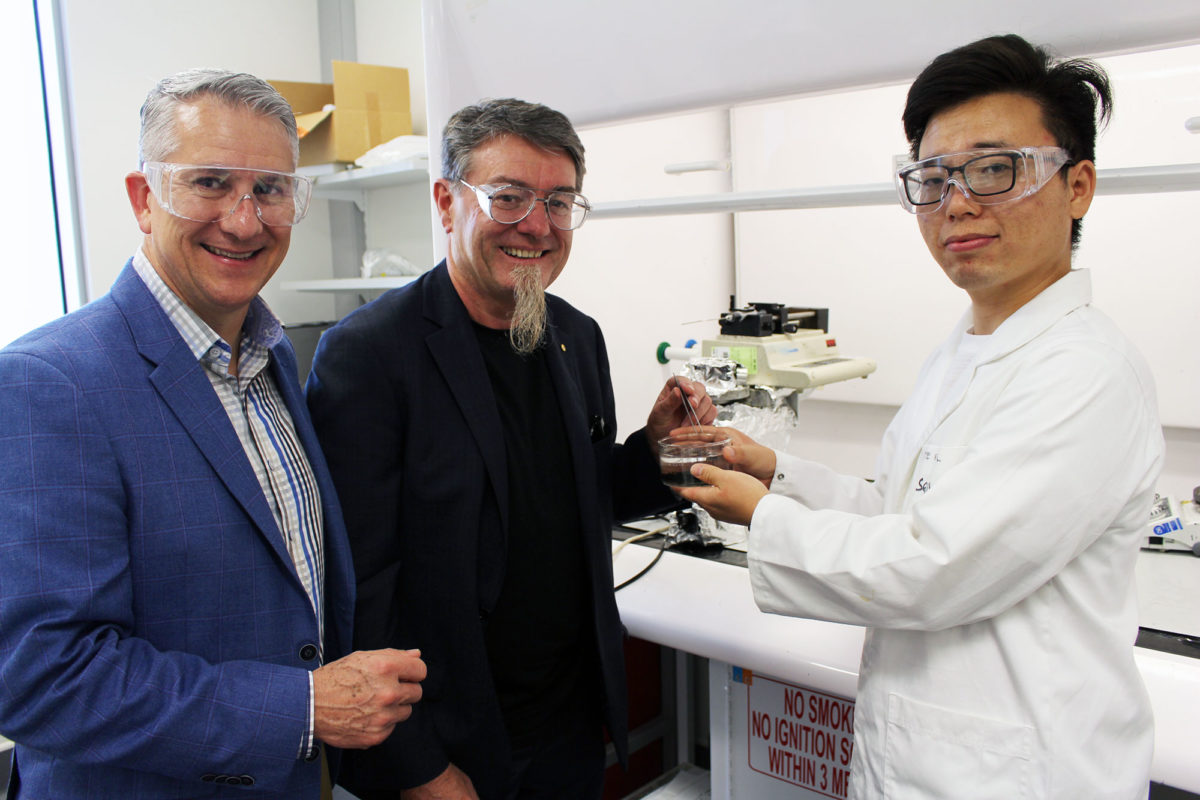News
3D printing bone tissue
Jun 28 2022
An international team including researchers from the ARC Centre of Excellence for Electromaterials Science (ACES) have helped progressed electroceutical research for treatment of diseases including rheumatoid arthritis, colitis and sepsis.

Prof Mario Romero-Ortega (left), Prof Gordon Wallace (middle) and Kezhong Wang (right).
The ACES team based at the University of Wollongong (UOW), in conjunction with researchers from the University of Houston, including project leader and collaborator Professor Mario Romero-Ortega, released their latest paper on this work. The article makes a significant contribution to the fields of neural engineering and immunology.
Published in the Nature Journal of Communications Biology, the work builds on previous studies when the team introduced the Sutrode to the world just over a year ago. This graphene based electrode was created using the fabrication technique known as fibre wet spinning.
UOW’s ACES Director Professor Gordon Wallace, a co-author on the paper, explained how special the Sutrode could be by combining the properties of a suture (that can be tied in knots) and an electrode (with high electrical conductivity). These Sutrodes can be integrated with delicate neural systems to monitor neural activity.
“This work has widespread implications for regulating the function of the spleen, particularly the efficient regulation of the immune response for electroceutical treatment of range of diseases,” said Prof Wallace.
“We have highlighted the ongoing need to develop systems with increased fidelity and spatial resolution. This will not only bring practical applications to the forefront but will enable the unattainable exploration of the human neural system.”
The work captured in the paper also reveals the ability to interrogate simultaneously the four individual neural inputs into the spleen. This new technical and biological achievement will not only bring practical applications to the fore but will enable a previously unattainable exploration of the human neural system.
Professor Mario Romero-Ortega, a professor of Bioengineering and Biomedical Sciences at the University of Houston, led this groundbreaking project.
“The flexibility and superb sensitivity of the Sutrode is allowing us to expand our understanding of how the nervous system controls main body organs, a critical step towards developing advanced therapies in Bioelectronic Medicines,” said Prof Romero-Ortega.
“Our collaborative work uncovered that the spleen is controlled by different terminal nerves, and that the Sutrode can be used to control them, increasing the precision in which the function of this organ can be modulated.”
MEDIA RELEASE HERE













